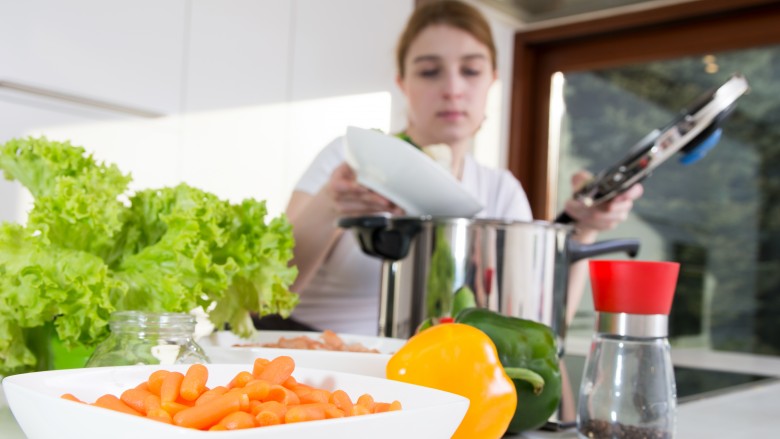Learning how to cook toor dal without a pressure cooker is both an art and a rewarding culinary adventure. For those who love to dive into traditional cooking methods or just don’t have a pressure cooker at hand, this is your calling. This method of preparation is perfect for everyonewhether you’re a seasoned chef or a home cook just stepping into the world of Indian cuisine.

Understanding the Basics of Toor Dal
Toor dal, also known as pigeon peas, is a staple in many Indian households. Its creamy texture and rich flavor make it a beloved ingredient in a variety of dishes. Typically, a pressure cooker is the modern tool of choice for most home cooks due to its efficiency. However, when cooked in a traditional manner, toor dal can offer depth and taste that a pressure cooker might speed past. Unlock the traditional secrets and learn how to bring out the genuine flavors of toor dal without relying on pressure cookers. If you have your ingredients ready, let’s embark on this flavor-packed journey together.
Essential Ingredients
- 1 cup of toor dal
- 4 cups of water
- 1/2 teaspoon of turmeric powder
- Salt to taste
- 2 tablespoons of ghee or vegetable oil
- 1 teaspoon of cumin seeds
- 2 dried red chilies
- 1 onion, finely chopped
- 2 tomatoes, chopped
- 4 cloves of garlic, minced
- 1 inch of ginger, grated
- Fresh coriander, chopped
Preparatory Steps
Soaking the Toor Dal
Before you dive into cooking, soaking the toor dal is essential. Start by rinsing the dal thoroughly under cold water. Soak it in 4 cups of water for at least 30 minutes. Soaking reduces cooking time and ensures the dal cooks evenly. It’s similar to what you’d expect when preparing beans or lentils, giving the legumes a head start on breaking down and becoming softer.
Preparing the Aromatics
Having a good set of knives is essential for efficient meal preparation. Check out this insightful guide on how to cut vegetables fast with a knife to hasten your prep work. Finely chop the onion and tomatoes, mince the garlic, and grate the ginger. These ingredients form the aromatic base that will further elevate the toor dal’s deep, earthy flavors. With tools like a reliable cutting board and cookware cleaner, you can prepare without hindrance.
Cooking Process
Cooking the Dal
Strain the soaked dal and transfer it into a deep saucepan. Add 4 cups of water and the turmeric powder. Stir well and bring to a boil over medium heat. Skim off any foam that surfaces, which is a natural part of the dal breaking down. Once boiling, reduce the heat to low, cover the pot partially, and let the dal simmer for about 45-50 minutes. You may need to add more water, depending on how thick or soupy you prefer your dal. Stir occasionally and keep an eye on the water level to prevent sticking or burning at the bottom of the pan.
Tempering for Taste
While the dal is cooking, heat ghee or oil in a separate pan. Add cumin seeds and dried red chilies, letting them sizzle for a few seconds. Following this, incorporate the chopped onions, stirring until lightly golden. Garlic and ginger follow next, filling your kitchen with an incredible aroma as they saut. Finally, add the chopped tomatoes, cooking until they soften and meld with the other ingredients to form a rich, flavorful base. This process, known as tempering or ‘tadka,’ is essential in adding not just depth but a smorgasbord of flavors.
Bringing It Together
Once the dal is soft and cooked to perfection, gently mix in the tempering. Season with salt according to taste. Allow everything to simmer together for a further 5-10 minutes, bringing all the wonderful flavors to blend into one harmonious dish. Before serving, sprinkle freshly chopped coriander for an added touch of freshness.
Serving Suggestions
The perfectly cooked toor dal, brimming with spices and textures, can be served in numerous ways. It’s frequently enjoyed with rice or Indian flatbreads like chapati or naan. Its comforting and rich flavor can effortlessly accompany a range of side dishes, offering a heartwarming meal that can bring joy to any dining table. Consider pairing it with refreshing greens or tangy pickles to complete the meal.
Final Thoughts and Tips
Cooking toor dal without a pressure cooker may take more time, but the result is a beautifully layered, flavorful dish that feels both traditional and authentic. For those who wish to tread beyond the beaten path of quick fixes, embracing the art of patience will unfurl flavors that are otherwise overlooked. Try experimenting with different spices or flavors according to your taste. For more kitchen insights, browse through our tips on cutting techniques.

Explore Further
Delve deeper into world cuisines and find more delight in cooking with our detailed guides and pressure cooker cooking tips. Whether it’s perfecting the art of knife work or simply discovering new cookware methods, there’s always something more to learn. Happy cooking!
This article contains affiliate links. We may earn a commission at no extra cost to you.


